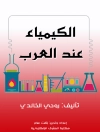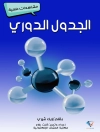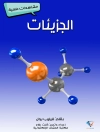Today, we are surrounded by a multitude of different chemicals that are essential components of our everyday life. As a consequence, there are various hazardous substances like dioxins, phthalates and flame-retardants circulating in the environment. These have an impact on ecosystems, wildlife and possibly human health. In recent years, the phenomenon called endocrine disruption has raised considerable concern. This book discusses the scientific basis of this issue using epidemiological and experimental in vitro and in vivo data about chemicals targeting the hormonal systems. It also provides an up-to-date review of international initiatives (including high-throughput screening, use of model organisms and in silico applications) aiming to screen, detect and functionally test these chemicals. The authors are highly experienced academics and acknowledged experts with both multidisciplinary and international expertise. The book provides an up-to-date, in-depth review of the current field of food safety research describing many of the ‘hot topics’ currently debated. Recent media attention concerning, for example, dioxins in meat and bisphenol A in baby bottles has created a growing interest in food safety-related issues from both consumers and authorities. In addition, European legislation REACH, which requires industry to extensively test chemicals, has led to new initiatives within this area. This book presents a comprehensive overview of the recent international initiatives formed to meet the challenges of environmental pollutants in our food.
Cuprins
Introduction;
Human exposure to food-borne chemicals;
Persistent organic pollutants (POPs) in food;
Chemicals targeting the reproductive axis;
Hormone-disruptive chemicals: effects on coming generations through epigenetic mechanisms;
Naturally occurring, hormonally active compounds in our diet;
ER isoforms as targets for nutrients and xenoestrogens;
From exposure to effects: Role of metabolism in the bioactivation/detoxication of food contaminants;
Aryl hydrocarbon receptor (Ah R) and b HLH-PAS transcription factors targeted by dietary and xenobiotic compounds;
Small model organisms as tools in food safety research;
Reporter animals as tools in food safety research;
In silico screening approaches;
Genomic approaches to toxicology and nutrition;
Large-scale screening of chemicals;
Summary and future perspectives.
Despre autor
Ingemar Pongratz gained his Ph D in 1996 and is now a Researcher/PI at the Department of Biosciences and Nutrition, Karolinska Institute, Sweden. He is Vice coordinator of the EU funded Network of Excellence (No E) CASCADE, which gathers more than 200 European scientists working on risk assessment and research on endocrine-disruptive chemicals (EDCs) in food. He is Coordinator of SME-RECEPTOR, an Industry-Academia exchange programme and CASCADE-FELLOW, an international post-doctoral programme. Dr Pongratz is author of 32 scientific manuscripts including several invited review articles and co-editor of several book chapters. The scientific focus of Dr Pongratz is to characterize the crosstalk mechanisms between the Ah R and ARNT transcription factors and nuclear receptors in particular the estrogen receptors ER? and ER? or LXRs (LXR? and LXR?). Linda Vikstr÷m Bergander is a Senior Researcher at the Department of Biosciences and Nutrition at Karolinska Institutet and gained her Ph D in Toxicological Genetics in 2005 from the Department of Genetics, Microbiology and Toxicology, Stockholm University. Dr Bergander is author of 8 scientific manuscripts and her scientific focus is to study nuclear receptor signaling pathways especially novel ligands for the Aryl hydrocarbon receptor and their impact on transcriptional regulation. She has an extensive interdisciplinary background with knowledge in the fields of molecular biology, biochemistry, toxicology and analytical chemistry with a thorough knowledge in xenobiotic metabolism.












